Adapted Schmidt Hardness Testing on Large Rock Samples—Kanfanar-South Quarry Case Study
Abstract
:1. Introduction
2. Materials and Research Methodology
2.1. Geological Properties of Rock Material
2.2. Basic Principles of Schmid Hardness Testing
2.3. Description of Research Methodology
3. Results
4. Discussion
5. Conclusions
- The commercial blocks in the quarry have a uniform hardness, and no major variations were found in the blocks obtained from different quarrying layers. The average tested Schmidt hardness by mining layer was 76.34 for layer I, 76.62 for layer II, 76.54 for layer III, 77.08 for layer IV, and 76.92 for layer IV.
- The scatter method is a valid data collection method for determining Schmidt hardness on large rock samples. It is more suitable for checking the uniformity of the quality of natural stone blocks than the bulk method, which is commonly used to determine Schmidt hardness.
- The proposed method considers the sustainability of the test and does not promote an increase in energy consumption, so the test surface does not need to be sanded before the hardness test. However, it should be noted that a lower value of up to 8.7% can be expected if the test is performed on a surface that was cut with a chain cutter in the Kanfanar-South quarry.
- By applying the Schmidt hammer to check the uniformity of the quality of natural stone blocks, sustainable production can be established, which is what global trends strive for. However, because this method has never been used before, it needs to be tested for some time in several other quarries to fully verify it under different mining conditions and finally write a technical note.
- Further research should be directed towards the creation of a model for the estimation of uniaxial compressive strength determined in accordance with the European standard that specifies the method for determining the uniaxial compressive strength of natural stone.
Author Contributions
Funding
Institutional Review Board Statement
Informed Consent Statement
Data Availability Statement
Acknowledgments
Conflicts of Interest
References
- Szwedzicki, T. Indentation Hardness Testing of Rock. Int. J. Rock Mech. Min. Sci. 1998, 35, 825–829. [Google Scholar] [CrossRef]
- Mukherjee, A.K.; Alam, M.M.; Ghose, S. Microhardness Characteristics of Indian Coal and Lignite. Fuel 1989, 68, 670–673. [Google Scholar] [CrossRef]
- Oliver, W.C.; Pharr, G.M. An Improved Technique for Determining Hardness and Elastic Modulus Using Load and Displacement Sensing Indentation Experiments. J. Mater. Res. 1992, 7, 1564–1583. [Google Scholar] [CrossRef]
- Godyń, K.; Kožušníková, A. Microhardness of Coal from Near-Fault Zones in Coal Seams Threatened with Gas-Geodynamic Phenomena, Upper Silesian Coal Basin, Poland. Energies 2019, 12, 1756. [Google Scholar] [CrossRef] [Green Version]
- Schmidt, E. Quality Control of Concrete by Rebound Hammer Testing (Versuche Mit Dem Neuen Beton-Prüfhammer Zur Qualitätsbestimmung des Betons). Schweiz. Arch. Angew. Wiss. Tech. 1951, 17, 139–143. [Google Scholar]
- Schmidt, E. Rebound Hammer for Concrete Testing. Schweiz Bauztg 1950, 68, 378–379. [Google Scholar]
- Yaalon, D.H.; Singer, S. Vertical Variation in Strength and Porosity of Calcrete (Nari) on Chalk, Shefela, Israel and Interpretation of Its Origin. J. Sediment. Res. 1974, 44, 1016–1023. [Google Scholar]
- Day, M.J.; Goudie, A.S. Field Assessment of Rock Hardness Using the Schmidt Test Hammer. BGRG Tech. Bull. 1977, 18, 19–29. [Google Scholar]
- Day, M.J. Rock Hardness: Field Assessment and Geomorphic Importance. Prof. Geogr. 1980, 32, 72–81. [Google Scholar] [CrossRef]
- Williams, R.B.G.; Robinson, D.A. Effect of Surface Texture on the Determination of the Surface Hardness of Rock Using the Schmidt Hammer. Earth Surf. Process. Landf. 1983, 8, 289–292. [Google Scholar] [CrossRef]
- Deere, D.U.; Miller, R.P. Engineering Classifications and Index Properties of Intact Rock; Technical Report No. AFWL-TR 65-116; University of Illinois: Chicago, IL, USA, 1966. [Google Scholar]
- Katz, O.; Reches, Z.; Roegiers, J.C. Evaluation of Mechanical Rock Properties Using a Schmidt Hammer. Int. J. Rock Mech. Min. Sci. 2000, 37, 723–728. [Google Scholar] [CrossRef]
- Aydin, A. ISRM Suggested Method for Determination of the Schmidt Hammer Rebound Hardness: Revised Version. Int. J. Rock Mech. Min. Sci. 2009, 46, 627–634. [Google Scholar] [CrossRef]
- American Society for Testing and Materials. Standard Test Method for Determination of Rock Hardness by Rebound Hammer Method; ASTM International: West Conshohocken, PA, USA, 2005. [Google Scholar]
- ISRM. Suggested Methods for Determining Hardness and Abrasiveness of Rocks. Int. J. Rock Mech. Min. Sci. Geomech. Abstr. 1978, 15, 89–97. [Google Scholar] [CrossRef]
- Copur, H.; Balci, C.; Tumac, D.; Bilgin, N. Field and Laboratory Studies on Natural Stones Leading to Empirical Performance Prediction of Chain Saw Machines. Int. J. Rock Mech. Min. Sci. 2011, 48, 269–282. [Google Scholar] [CrossRef]
- Tumac, D. Predicting the Performance of Chain Saw Machines Based on Shore Scleroscope Hardness. Rock Mech. Rock Eng. 2014, 47, 703–715. [Google Scholar] [CrossRef]
- Tumac, D.; Avunduk, E.; Copur, H.; Bilgin, N.; Balci, C. Estimation of the Performance of Chain Saw Machines from Shore Hardness and the Other Mechanical Properties. In Proceedings of the Rock Characterisation, Modelling and Engineering Design Methods. In Proceedings of the 3rd ISRM SINOROCK 2013 Symposium; Shanghai, China, 18–20 June 2013, pp. 261–265.
- Rasti, A.; Ranjkesh Adarmanabadi, H.; Sahlabadi, M.R. Effects of Controllable and Uncontrollable Parameters on Diamond Wire Cutting Performance Using Statistical Analysis: A Case Study. Rud.-Geol.-Naft. Zb. 2021, 36, 21–32. [Google Scholar] [CrossRef]
- Mikaeil, R.; Esmailzadeh, A.; Aghaei, S.; Shaffiee Haghshenas, S.; Jafarpour, A.; Mohammadi, J.; Ataei, M. Evaluating the Sawability of Rocks by Chain-Saw Machines Using the PROMETHEE Technique. Rud.-Geol.-Naft. Zb. 2021, 36, 25–36. [Google Scholar] [CrossRef]
- Khoshouei, M.; Bagherpour, R.; Jalalian, M.H.; Yari, M. Investigating the Acoustic Signs of Different Rock Types Based on the Values of Acoustic Signal RMS. Rud.-Geol.-Naft. Zb. 2020, 35, 29–38. [Google Scholar] [CrossRef]
- Ogunsola, N.O.; Lawal, A.I.; Saliu, M.A. Variations of Physico-Mechanical, Mineralogical and Geochemical Properties of Marble under the Influence of Weathering. Min. Miner. Depos. 2019, 13, 95–102. [Google Scholar] [CrossRef]
- Karmakar, M.; Banerjee, M.; Ghosh, D. Evaluation of Micro-Weathering Index and Weathering Grade of Diverse Geomorphic Features of Proterozoic Terrain Applying Schmidt Hammer. Phys. Geogr. 2022. [Google Scholar] [CrossRef]
- Karaman, K.; Kesimal, A. A Comparative Study of Schmidt Hammer Test Methods for Estimating the Uniaxial Compressive Strength of Rocks. Bull. Eng. Geol. Environ. 2015, 74, 507–520. [Google Scholar] [CrossRef]
- Cargill, J.S.; Shakoor, A. Evaluation of Empirical Methods for Measuring the Uniaxial Compressive Strength of Rock. Int. J. Rock Mech. Min. Sci. Geomech. Abstr. 1990, 27, 495–503. [Google Scholar] [CrossRef]
- Briševac, Z.; Hrženjak, P.; Buljan, R. Models for Estimating Uniaxial Compressive Strength and Elastic Modulus. J. Croat. Assoc. Civ. Eng. 2016, 68, 19–28. [Google Scholar] [CrossRef] [Green Version]
- Briševac, Z.; Pollak, D.; Maričić, A.; Vlahek, A. Modulus of Elasticity for Grain-supported Carbonates— Determination and Estimation for Preliminary Engineering Purposes. Appl. Sci. 2021, 11, 6418. [Google Scholar] [CrossRef]
- Hamzaban, M.T.; Jakobsen, P.D.; Touranchehzadeh, A. Estimating Rock Mechanical Properties with Nondestructive Tests. In Proceedings of the ISRM International Symposium—EUROCK 2020, Online, 14–19 June 2020. [Google Scholar]
- Yagiz, S. Predicting Uniaxial Compressive Strength, Modulus of Elasticity and Index Properties of Rocks Using the Schmidt Hammer. Bull. Eng. Geol. Environ. 2009, 68, 55–63. [Google Scholar] [CrossRef]
- Briševac, Z.; Maričić, A.; Brkić, V.; Bralić, V. An Overview and Future Prospects of Croatian Geotechnological Heritage. Rud.-Geol.-Naft. Zb. 2021, 36, 90–97. [Google Scholar] [CrossRef]
- Briševac, Z.; Maričić, A.; Brkić, V. Croatian Geoheritage Sites with the Best-Case Study Analyses Regarding Former Mining and Petroleum Activities. Geoheritage 2021, 13, 95. [Google Scholar] [CrossRef]
- Gul, E. Mineral Extraction and Processing Industries: Do They Have Socioeconomic Benefits in a Developing Country Scenario? Min. Miner. Depos. 2022, 16, 32–42. [Google Scholar] [CrossRef]
- Crnković, B.; Jovičić, D. Dimension Stone Deposits in Croatia. Rud.-Geol.-Naft. Zb. 1993, 5, 136–163. [Google Scholar]
- Rasti, A.; Ebrahimi, N.; Tabaei, M.; Ranjkesh Adarmanabadi, H. Maximize Mining Exploitation Efficiency of the Quarry: A Case Study. Rud.-Geol.-Naft. Zb. 2021, 36, 21–31. [Google Scholar] [CrossRef]
- Pamuk, E.; Büyüksaraç, A. Investigation of Strength Characteristics of Natural Stones in Ürgüp (Nevşehir/Turkey). Bitlis Eren Univ. J. Sci. Technol. 2017, 7, 74–79. [Google Scholar] [CrossRef]
- Kong, F.; Xue, Y.; Qiu, D.; Gong, H.; Ning, Z. Effect of Grain Size or Anisotropy on the Correlation between Uniaxial Compressive Strength and Schmidt Hammer Test for Building Stones. Constr. Build. Mater. 2021, 299, 123941. [Google Scholar] [CrossRef]
- Özdemir, E. Investigation of Some Property Changes of Light-Colored Turkish Natural Stones after High-Temperature Treatments. Sustainability 2022, 14, 10298. [Google Scholar] [CrossRef]
- Dinçer, I.; Acar, A.; Çobanoğlu, I.; Uras, Y. Correlation between Schmidt Hardness, Uniaxial Compressive Strength and Young’s Modulus for Andesites, Basalts and Tuffs. Bull. Eng. Geol. Environ. 2004, 63, 141–148. [Google Scholar] [CrossRef]
- Demirdag, S.; Yavuz, H.; Altindag, R. The Effect of Sample Size on Schmidt Rebound Hardness Value of Rocks. Int. J. Rock Mech. Min. Sci. 2009, 46, 725–730. [Google Scholar] [CrossRef]
- Gupta, V.; Sharma, R.; Sah, M.P. An Evaluation of Surface Hardness of Natural and Modified Rocks Using Schmidt Hammer: Study from Northwestern Himalaya, India. Geogr. Ann. Ser. A Phys. Geogr. 2009, 91, 179–188. [Google Scholar] [CrossRef]
- Cerna, B.; Engel, Z. Surface and Sub-Surface Schmidt Hammer Rebound Value Variation for a Granite Outcrop. Earth Surf. Process. Landf. 2011, 36, 170–179. [Google Scholar] [CrossRef]
- Karakul, H. Investigation of the Effect of Impact Direction on Schmidt Rebound Values by Multivariate Regression and Neuro-Fuzzy Model. SN Appl. Sci. 2020, 2, 1807. [Google Scholar] [CrossRef]
- Matičec, D.; Bergant, S.; Fuček, L.; Palenik, D.; Korbar, T.; Vlahović, I.; Šparica, M.; Koch, G.; Prtoljan, B.; Galović, I.; et al. Basic Geological Map of the Republic of Croatia Scale 1:50 000—Sheet Rovinj 1; Hrvatski Geološki Institut (Zavod za Geologiju): Zagreb, Croatia, 2017; ISBN 978-953-6907-56-4. [Google Scholar]
- Proceq. Rock Schmidt Operating Instructions; Proceq: Schwerzenbach, Switzerland, 2017. [Google Scholar]
- Kosović, K. Determining the Hardness of Commercial Blocks of Architectural-Building Stone. Master’s Thesis, University of Zagreb, Faculty of Mining Geology and Petroleum Engineering, Zagreb, Croatia, 2022. [Google Scholar]
- Briševac, Z.; Hrženjak, P.; Cotman, I. Estimate of Uniaxial Compressive Strength and Young’s Modulus of the Elasticity of Natural Stone Giallo d’Istria. Procedia Eng. 2017, 191, 434–441. [Google Scholar] [CrossRef]
- BSI. BS EN 1926:2006; Natural Stone Test Methods. Determination of Uniaxial Compressive Strength. BSI: London, UK, 2006.


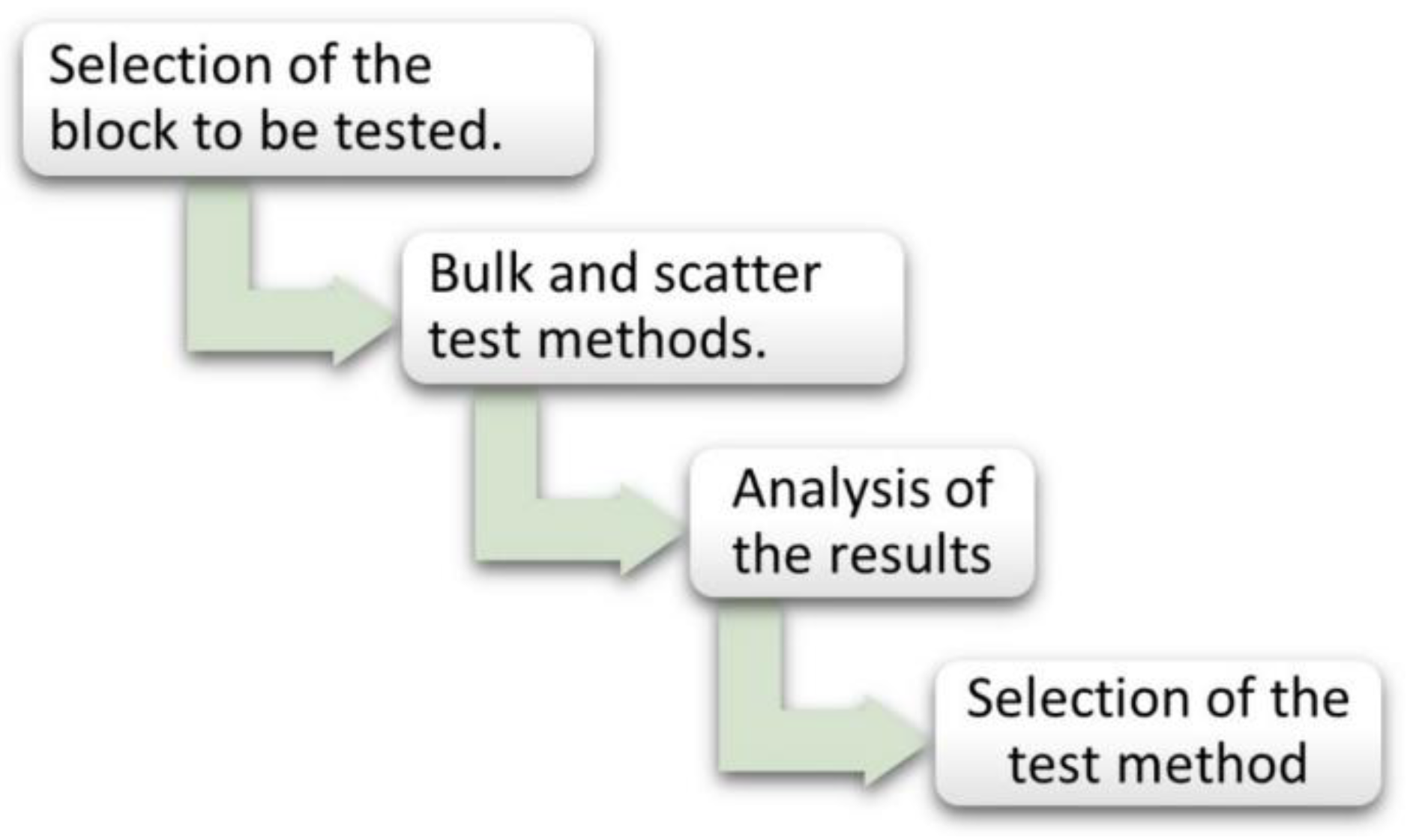
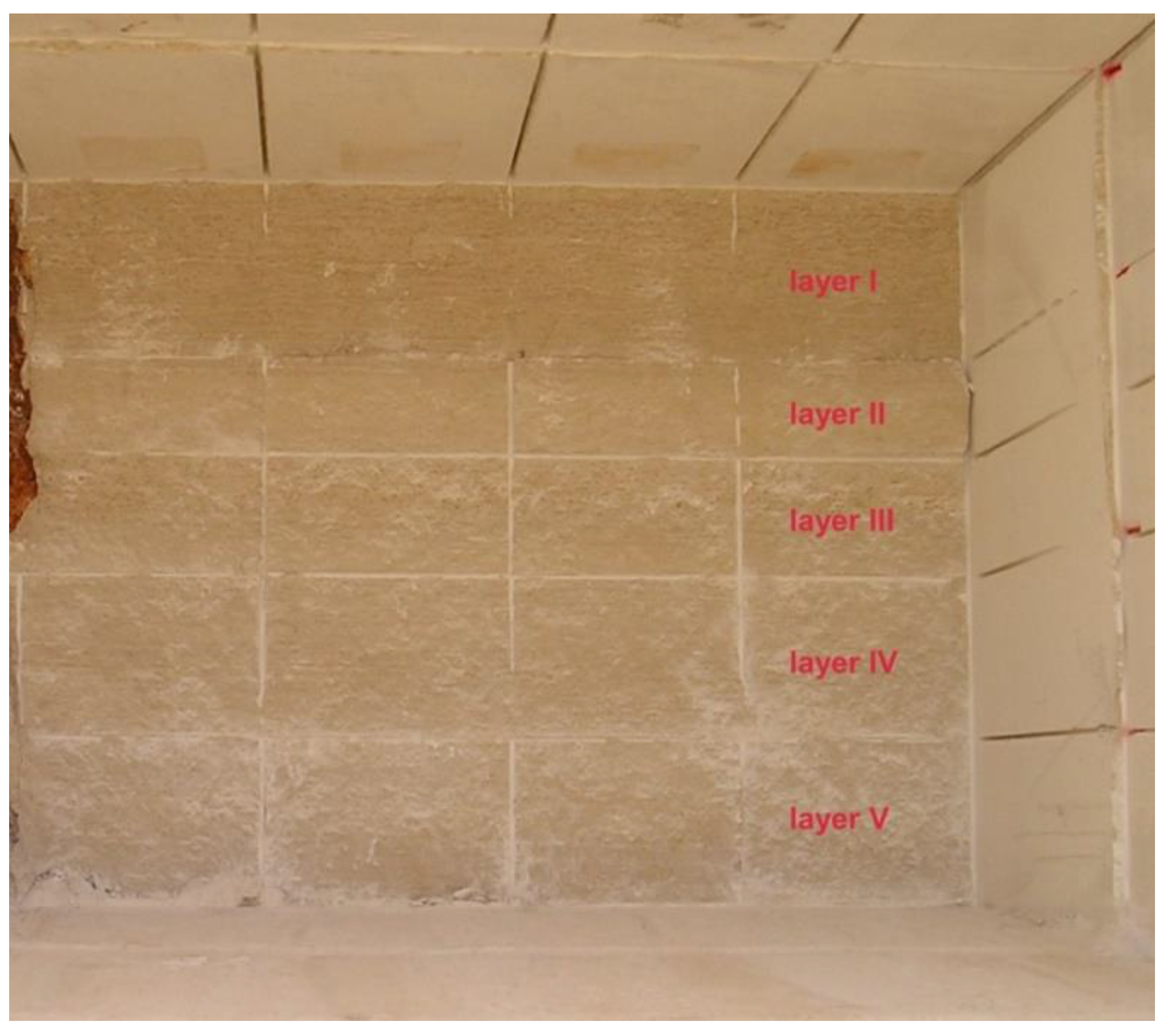
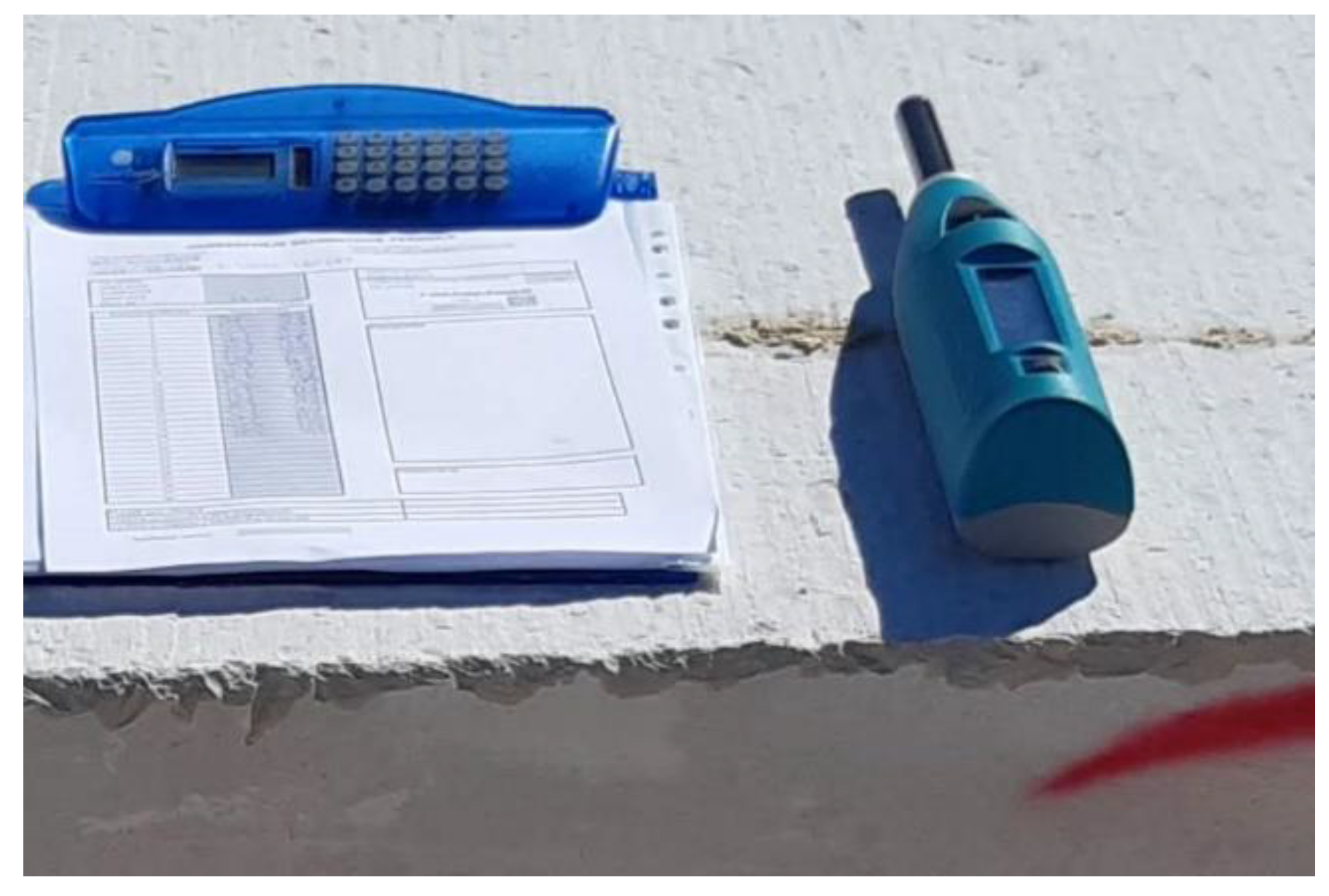


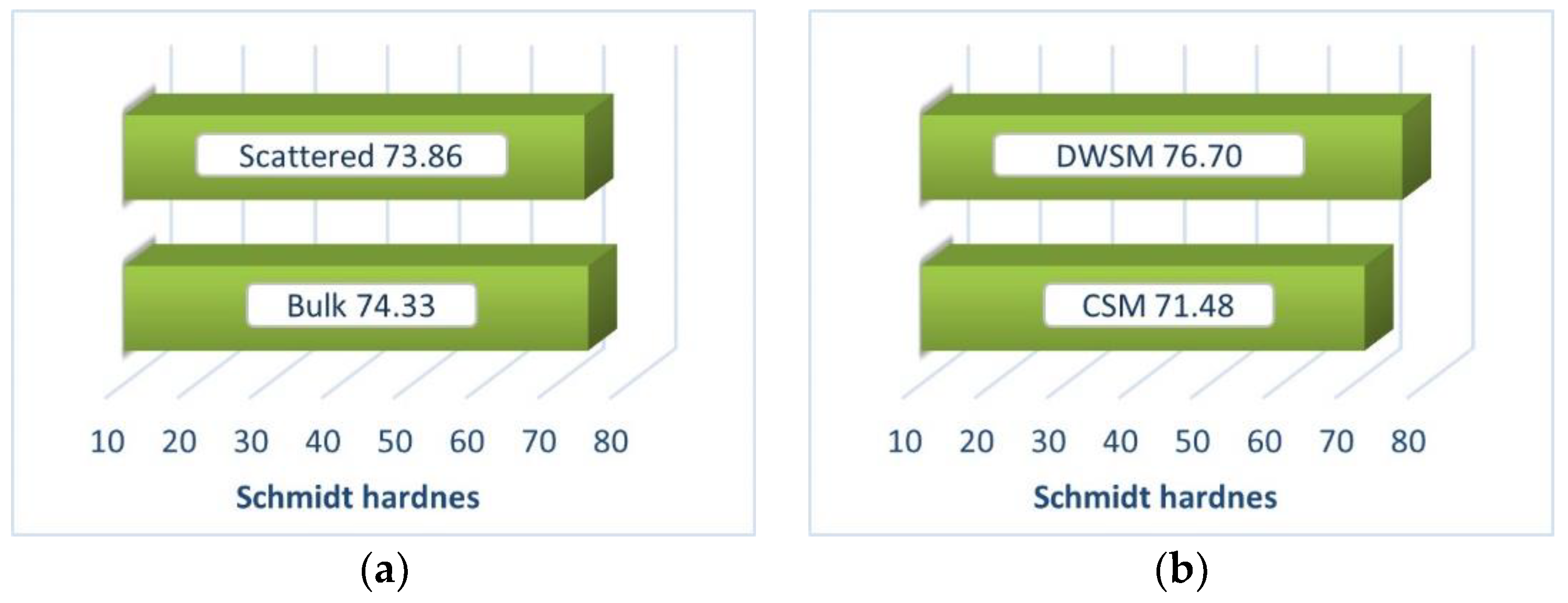
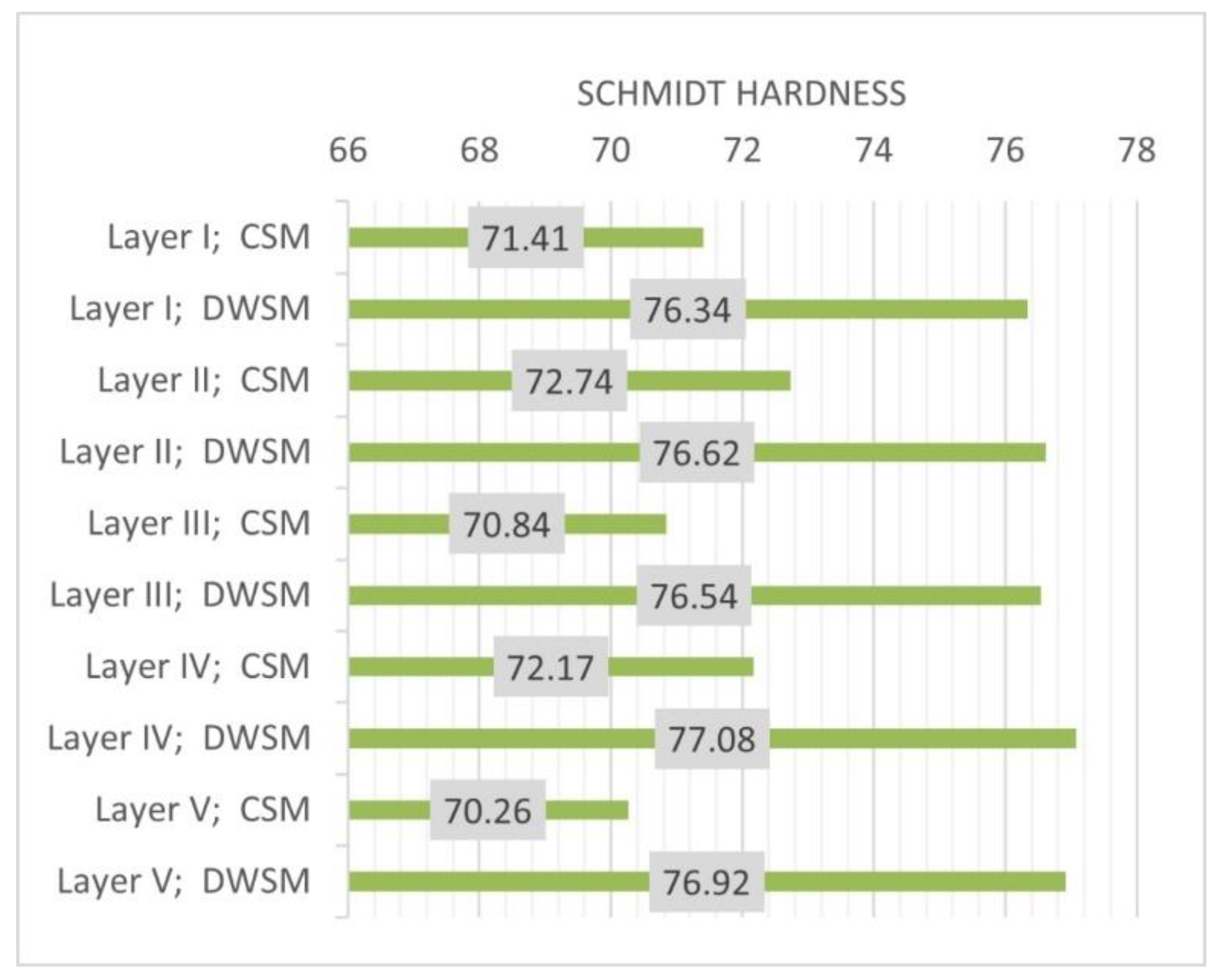
| Researchers | SH Application | Material |
|---|---|---|
| Yaalon and Singer [7] | Variation in strength and porosity | Calcrete |
| Day and Goudie [8] Day [9] | Geomorphology | Carbonate rocks |
| Williams and Robinson [10] | Correlation of surface texture | Sedimentary rocks |
| Katz et al. [12] Hamzaban et al. [28] | Evaluation of mechanical rock properties | Chalk, limestone, sandstone, marble, granite |
| Cargill and Shakoor [25] Briševac et al. [26] Dinçer et al. [38] Karaman and Kesimal [24] Briševac et al. [27] | Estimating the UCS | Basalt, metabasalt, dacite, limestone, volcanic breccia, |
| Demirdag et al. [39] | Effect of sample size on SH | Andesite, limestone, marble travertine |
| Gupta et al. [40] | Surface hardness of natural and modified rocks | Quartz mica gneiss, schist, quartzite, and calc-silicate |
| Cerna and Engel [41] | SH variation for a granite outcrop | Granite |
| Copur et al. [16] Tumac et al. [18] Tumac [17] Rasti et al. [19] Mikaeil [20] | Predicting the sawability of carbonate rocks mechanical rock properties | Travertine, marble, limestone |
| Pamuk and Büyüksaraç [35] | Testing of SH on smaller samples of dimensions 10 × 10 × 10 cm | Natural stone |
| Ogunsola et al. [22] Karmakar et al. [23] | Effect of weathering on rock properties | Marble |
| Khoshouei et al. [21] | Correlation with rock acoustic signs | Travertine, limestone, marble, granite, sienite, andesite, biomicritic limestone, sandy limestone |
| Karakul [42] | Effect of impact direction on SH | Andesite, travertine. limestone marble, tuf, ignimbrite |
| Kong et al. [36] | Effect of grain size and anisotropy on the correlation between UCS and SH | Fine-grained sandstone, |
| Özdemir [37] | Effect of high-temperature treatments on rock properties | Limestone, dolomite |
| Bulk Method | Scattered Method | |
|---|---|---|
| Number of tests | 40 | 40 |
| Mean value | 74.33 | 73.86 |
| Minimum value | 67.33 | 67.53 |
| Maximum value | 79.00 | 78.53 |
| Standard deviation | 3.11 | 3.06 |
| Coefficient of variation | 4.18 | 4.15 |
| CSM | DWSM | |
|---|---|---|
| Number of tests | 40 | 40 |
| Mean value | 71.48 | 76.62 |
| Minimum value | 67.33 | 70.35 |
| Maximum value | 75.53 | 79.00 |
| Standard deviation | 2.06 | 1.27 |
| Coefficient of variation | 2.89 | 1.66 |
| Layers | I | II | III | IV | V |
|---|---|---|---|---|---|
| Number of tests | 16 | 16 | 16 | 16 | 16 |
| Mean value | 71.41 | 72.74 | 70.84 | 72.17 | 70.26 |
| Minimum value | 68.73 | 69.03 | 67.53 | 69.75 | 67.33 |
| Maximum value | 74.58 | 75.53 | 74.73 | 74.50 | 75.53 |
| Standard deviation | 1.57 | 1.87 | 2.04 | 1.72 | 2.22 |
| Coefficient of variation | 2.19 | 2.57 | 2.88 | 2.38 | 3.16 |
| Layers | I | II | III | IV | V |
|---|---|---|---|---|---|
| Number of tests | 16 | 16 | 16 | 16 | 16 |
| Mean value | 76.34 | 76.62 | 76.54 | 77.08 | 76.92 |
| Minimum value | 74.13 | 74.45 | 73.98 | 75.43 | 68.45 |
| Maximum value | 78.03 | 77.53 | 77.93 | 79.00 | 78.80 |
| Standard deviation | 0.92 | 1.07 | 1.11 | 0.99 | 3.52 |
| Coefficient of variation | 1.21 | 1.39 | 1.45 | 1.28 | 4.57 |
| Layers | I | II | III | IV | V |
|---|---|---|---|---|---|
| DWSM | 76.34 | 76.62 | 76.54 | 77.08 | 76.92 |
| CSM | 71.41 | 72.74 | 70.84 | 72.17 | 70.26 |
| Difference | 4.93 | 3.88 | 5.7 | 4.91 | 6.66 |
| Difference in % | 6.5 | 5.1 | 7.4 | 6.4 | 8.7 |
| Layers | I | II | IV | V |
|---|---|---|---|---|
| Min value according to [46] | 55.5 | 60.0 | 61.0 | 59.5 |
| Max value according to [46] | 66.5 | 67.0 | 68.5 | 69.5 |
| DWSM surface in this study | 76.34 | 76.62 | 77.08 | 76.92 |
| CSM surface in this study | 71.41 | 72.74 | 72.17 | 70.26 |
Disclaimer/Publisher’s Note: The statements, opinions and data contained in all publications are solely those of the individual author(s) and contributor(s) and not of MDPI and/or the editor(s). MDPI and/or the editor(s) disclaim responsibility for any injury to people or property resulting from any ideas, methods, instructions or products referred to in the content. |
© 2023 by the authors. Licensee MDPI, Basel, Switzerland. This article is an open access article distributed under the terms and conditions of the Creative Commons Attribution (CC BY) license (https://creativecommons.org/licenses/by/4.0/).
Share and Cite
Briševac, Z.; Kosović, K.; Navratil, D.; Korman, T. Adapted Schmidt Hardness Testing on Large Rock Samples—Kanfanar-South Quarry Case Study. Sustainability 2023, 15, 2058. https://doi.org/10.3390/su15032058
Briševac Z, Kosović K, Navratil D, Korman T. Adapted Schmidt Hardness Testing on Large Rock Samples—Kanfanar-South Quarry Case Study. Sustainability. 2023; 15(3):2058. https://doi.org/10.3390/su15032058
Chicago/Turabian StyleBriševac, Zlatko, Kristian Kosović, Dražen Navratil, and Tomislav Korman. 2023. "Adapted Schmidt Hardness Testing on Large Rock Samples—Kanfanar-South Quarry Case Study" Sustainability 15, no. 3: 2058. https://doi.org/10.3390/su15032058
APA StyleBriševac, Z., Kosović, K., Navratil, D., & Korman, T. (2023). Adapted Schmidt Hardness Testing on Large Rock Samples—Kanfanar-South Quarry Case Study. Sustainability, 15(3), 2058. https://doi.org/10.3390/su15032058






